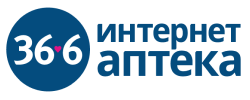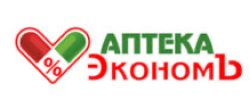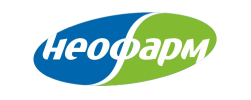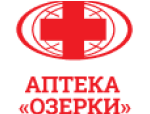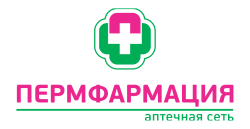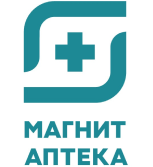-
Mexidol® solution for IV and IM administration 50 mg/ml
10 vials of 2 ml -
Mexidol® solution for IV and IM administration 50 mg/ml, 5 vials of 5 ml
-
Mexidol® solution for IV and IM administration 50 mg/ml, 10 vials of 5 ml
-
Mexidol® film-coated tablets, 30 tablets of 125 mg
-
Mexidol® film-coated tablets, 50 tablets of 125 mg
-
Mexidol® FORTE film-coated tablets, 40 tablets of 250 mg

30 tablets of 125 mg
1 tablet contains 125 mg of the active ingredient
Approved for children of 6 years of age and older
1. Name of the drug
Mexidol®, 125 mg, film-coated tablets
2. Qualitative and quantitative composition
Active ingredient: ethylmethylhydroxypyridine succinate.
1 tablet contains: 125.0 mg of ethylmethylhydroxypyridine succinate.
Excipients to be considered in the drug formulation: lactose monohydrate.
A complete list of excipients is given in section 6.1.
3. Dosage form
Film-coated tablets.
Round, biconvex, film-coated, white to off-white tablets. A characteristic odor may be present.
4. Clinical data
Indications
- Consequences of acute cerebral circulation disorders, including those after transient ischemic attacks, in the subcompensation phase as prophylactic courses;
- Mild traumatic brain injury, consequences of traumatic brain injury;
- Encephalopathies of various origin (dyscirculatory, dysmetabolic, post-traumatic, mixed);
- Vegetative dystonia syndrome;
- Mild cognitive disorders of atherosclerotic origin;
- Anxiety disorders in neurotic and neurosis-like states;
- Ischemic heart disease as part of complex therapy;
- The relief of withdrawal syndrome in alcoholism with predominant neurosis-like and vegetative-vascular disorders, post-withdrawal disorders;
- Status post acute antipsychotic intoxication;
- Asthenic conditions, as well as prevention of somatic diseases induced by extreme factors and stress;
- Exposure to extreme (stressful) factors;
- Attention deficit hyperactivity disorder (ADHD) in children, including hyperactivity, disorder of attention, and impulsiveness.
4.3. Dosage regimen and method of administration
Dosage regimen
The drug is taken orally, 125–250 mg 3 times a day; the maximum daily dose is 750 mg. Duration of treatment: 2-8 weeks; for alcohol withdrawal relief: 5-7 days. The treatment is discontinued gradually by reducing the dose over 2-3 days. Initial dose: 125-250 mg (1-2 tablets) 1-2 times a day, with gradual up-titration until the therapeutic effect is achieved. For the treatment of consequences of acute cerebral circulation disorders, including those after transient ischemic attacks, tablets should be prescribed following a course of treatment with the solution for intravenous or intramuscular administration. The duration of the therapy course in patients with ischemic heart disease should be at least 1.5-2 months. Repeated courses (as recommended by the physician) are preferably administered in spring and autumn.
Children
Attention deficit hyperactivity disorder (ADHD) in children, including hyperactivity, disorder of attention, and impulsiveness: 125 mg 2 times a day for 6 weeks.
Mode of administration
The drug is taken orally with water.
4.3. Contraindications
- Individual hypersensitivity to the drug or any of its components listed in section 6.1;
- Acute liver and/or kidney dysfunction;
- Pediatric use in children of up to 6 years of age (due to insufficient data on the drug action);
- Pregnancy, breastfeeding (due to insufficient data on the drug action);
- Lactose intolerance, lactase deficiency, glucose-galactose malabsorption.
4.4. Special instructions and precautions for use:
Patients with rare hereditary galactose intolerance, lactase deficiency, or glucose-galactose malabsorption should not take this drug.
4.5. Interaction with other drugs and other types of interaction:
Mexidol® is compatible with all drugs used to treat somatic diseases. It enhances the effects of benzodiazepines, antidepressants, anxiolytics, anticonvulsants, and anti-Parkinsonian drugs. The drug reduces the toxic effects of ethyl alcohol.
4.6. Fertility, pregnancy and lactation:
Mexidol® is contraindicated during pregnancy and breastfeeding.
4.7. Effects on ability to drive and use machines
During the drug administration period, caution should be exercised when performing work requiring quick psychophysical reactions (driving vehicles, using machines, etc.).
4.8. Adverse reactions
Summary of adverse reactions
The frequency of side effects was determined pursuant to the World Health Organization (WHO) classification: very common (≥10%), common (≥1 and <10%), uncommon (≥0.1 and <1%), rare (≥0.01% and <0.1%), very rare (<0.01%) and unknown (frequency cannot be determined based on available data). Immune system disorders: very rare – angioedema, urticaria. Mental disorders: very rare – drowsiness. Nervous system disorders: very rare – headache. Gastrointestinal disorders: very rare – dry mouth, nausea, pain, burning and discomfort in the epigastric region, heartburn, flatulence, and diarrhea. Skin and subcutaneous tissue disorders: very rare – rash, itching, hyperemia.
Reporting suspected adverse reactions
It is important to report suspected adverse reactions after the marketing authorization of a drug in order to ensure continuous monitoring of its benefit-risk ratio. Healthcare professionals are advised to report any suspected adverse reactions of the drug through the national adverse reaction reporting systems of the Eurasian Economic Union member states.
Address: bld. 1, 4, Slavyanskaya Square, 109012 Moscow, Russia
Federal Service for Supervision in Healthcare of the Russian Federation (Roszdravnadzor)
4.9. Overdosage
Symptoms
Drowsiness, insomnia
Treatment
Due to low toxicity, overdose is unlikely. Treatment is usually not required, symptoms disappear within a day. In the case of pronounced manifestations, supportive and symptomatic treatment should be administered.
5. Pharmacological properties
5.1. Pharmacology
Pharmacotherapeutic group: antioxidant agent.
ATX Code: N07XX.
Pharmacological action
The pharmacological action of Mexidol® is due to its antioxidant, antihypoxant, and membrane-protective action. It inhibits lipid peroxidation, increases superoxide dismutase activity, increases the lipid-protein ratio, reduces membrane viscosity and increases membrane fluidity. Mexidol® modulates the activity of membrane-bound enzymes (calcium-independent phosphodiesterase, adenylate cyclase, acetylcholinesterase), receptor complexes (benzodiazepine, GABA, acetylcholine), which enhances their ability to bind to ligands, contributes to preserving the structural and functional organization of biomembranes, transporting neurotransmitters and improving synaptic transmission. It causes enhancement of compensatory activation of aerobic glycolysis and reduction of the inhibition rate of oxidative processes in the Krebs cycle under hypoxia with an increased content of ATP, creatine phosphate and activation of energy-synthesizing functions of mitochondria, as well as promotes stabilization of cell membranes. Mexidol® increases dopamine levels in the brain.
Pharmacodynamics
Mexidol® is an inhibitor of free radical processes and a membrane protector with antihypoxic, stress-protective, nootropic, anticonvulsant, and anxiolytic effects. The drug increases the body’s resistance to various damaging factors (shock, hypoxia and ischemia, impaired cerebral circulation, intoxication with alcohol and antipsychotic agents (neuroleptics)). Its anti-stress action is manifested in the normalization of post-stress behavior, somatovegetative disorders, restoration of sleep-wake cycles, improvement of impaired learning and memory processes, and reduction of dystrophic and morphological changes in various brain structures. It has a hypolipidemic effect, reduces the levels of total cholesterol and low-density lipoproteins. Mexidol® improves the functional state of ischemic myocardium. In the case of coronary insufficiency, it increases collateral blood supply to the ischemic myocardium, and helps preserve cardiomyocyte integrity and maintain their functional activity. It effectively restores myocardial contractility in cases of reversible cardiac dysfunction. It stabilizes membrane structures of blood cells (erythrocytes and platelets) in hemolysis. The drug improves metabolism and blood supply to the brain, improves microcirculation and rheological properties of blood, and reduces platelet aggregation.
Mexidol® significantly reduces the severity of attention deficit hyperactivity disorder (ADHD) symptoms in children aged 6 to 12: it decreases inattention, hyperactivity/impulsiveness, and promotes clinical improvement. When used for ADHD, the drug helps increase attentiveness and concentration, improves perseverance, reduces hyperactivity, and decreases impulsiveness, thereby enhancing learning and social adaptation in children. Mexidol® exhibits an pronounced antitoxic action in withdrawal syndrome. It alleviates neurological and neurotoxic manifestations of acute alcohol intoxication, restores behavioral disorders and vegetative functions, and can reverse cognitive deficits caused by prolonged ethanol use and its discontinuation. Mexidol® enhances the effects of tranquilizers, neuroleptics, antidepressants, hypnotics, and anticonvulsants, allowing for dose reduction and minimization of side effects.
Clinical efficacy and safety
5.2. Pharmacokinetics:
Absorption
It is rapidly absorbed when taken orally. The maximum concentration at doses of 400-500 mg is 3.5-4.0 μg/mL. It is quickly distributed to organs and tissues.
Distribution
The mean residence time of the drug in the body after oral administration is 4.9-5.2 hours.
Biotransformation
The drug is metabolized in the liver by glucuronic conjugation. 5 metabolites have been identified: 3-oxypyridine phosphate is formed in the liver and decompounds into phosphoric acid and 3-oxypyridine by alkaline phosphatase; the 2nd metabolite is pharmacologically active, is formed in large quantities and detected in the urine 1-2 days after administration; the 3rd metabolite is excreted in large quantities with urine; the 4th and 5th metaolites are glucuronic conjugates.
Elimation
Half-life (T1/2) after oral administration is 2.0-2.6 hours. It is rapidly excreted in the urine, primarily as metabolites, with only a small amount excreted unchanged. The most intensive excretion occurs within the first 4 hours after the drug administration. The urinary excretion levels of the unchanged drug and its metabolites exhibit individual variability.
5.3. Preclinical safety data
No specific harm to humans has been identified in preclinical data obtained from standardized studies of pharmacological safety, repeated dose toxicity, genotoxicity, carcinogenic potential, reproductive and ontogenetic toxicity.
6. Pharmaceutical properties
6.1. List of excipients
Excipients:
Lactose monohydrate;
Povidon K-30;
Magnesium stearate;
Film coating;
Hypromellose;
Titanium dioxide;
Lactose monohydrate;
Macrogol;
Triacetin.
6.2. Incompatibility:
Not applicable.
6.3. Validity period (shelf life)
3 years.
Do not use the drug after expiration of the shelf life specified on the packaging.
6.4. Special storage precautions:
Store in a place protected from light at a temperature no higher than 25°C.
Keep out of reach of children.
6.5. Description and content of the primary packaging
10 film-coated tablets are packaged in a blister pack made of polyvinyl chloride film and aluminum foil.
1, 2, 3, 4, or 5 blister packs are placed in a carton, along with the package insert.
6.6. Special precautions for disposal of the used drug or waste obtained after the drug administration or handling
There are no special disposal requirements.
7. Marketing authorization holder
PHARMASOFT RESEARCH AND PRODUCTION COMPLEX LLC
Bld. 12, floor 1, 41, Sudostroitelnaya Street, 115407 Moscow, Russia Phone/fax: +7 (495) 626-47-55 E-mail: pharmasoft@pharmasoft.ru
7.1. Representative of the Marketing Authorization Holder
Please address consumer complaints to: In the Russian Federation, PHARMASOFT RESEARCH AND PRODUCTION COMPLEX LLC, Bld. 12, floor 1, 41, Sudostroitelnaya Street, 115407 Moscow, Russia Phone/fax: +7 (495) 626-47-55 E-mail: pharmasoft@pharmasoft.ru
8. Marketing authorization number
ЛП-No.(000086)-(РГ-RU)
9. Date of the first marketing authorization (authorization confirmation, re-authorization)
Date of the first registration: 10/30/2020
10. Text revision date
The summary of product characteristics for Mexidol® is available on the information portal of the Eurasian Economic Union in the Internet information and communication network at http://www.eurasiancommission.org/.
Active ingredient: ethylmethylhydroxypyridine succinate
Before taking the drug, carefully read the package insert, as it contains important information for you.
- Keep the package insert. You may need to read it again.
- If you have any additional questions, consult your physician, pharmacist, or nurse.
- This drug has been prescribed specifically for you. Do not share it with others. It may harm them, even if their symptoms are similar to yours.
- If you experience any adverse reactions, consult your physician, pharmacist, or nurse. This recommendation applies to all possible adverse reactions, including those not listed in section 4 of the package insert.
The contents of the package insert
- Composition and intended use of Mexidol®.
- What you need to know before taking Mexidol®.
- Mode of administration of Mexidol®.
- Possible adverse reactions.
- Storage conditions of Mexidol®.
- Package contents and other information.
1. Composition and intended use of Mexidol®
Mexidol® contains the active ingredient ethylmethylhydroxypyridine succinate that belongs to the class of antioxidants. Antioxidants inhibit oxidative processes that occur in various disorders of the nervous and cardiovascular systems, as well as in cases of alcohol and drug intoxication.
Indications:
Mexol® is used for:
- consequences of acute cerebral circulation disorders, including those after transient cerebral blood flow disturbances (transient ischemic attacks), in the initial stage of the disease (subcompensation phase) as prophylactic courses;
- mild traumatic brain injury, consequences of traumatic brain injury;
- brain function disorders (encephalopathy) of various origin (caused by circulatory disorders (dyscirculatory encephalopathy), metabolic disorders (dysmetabolic encephalopathy), post-traumatic, or mixed encephalopathy);
- conditions caused by dysfunction of the nerves controlling the functions of internal organs (dysautonomia syndrome);
- mild cognitive impairments caused by vascular atherosclerosis (mild cognitive disorders of atherosclerotic origin);
- anxiety disorders in neurotic and neurosis-like states;
- heart diseases caused by insufficient blood supply (ischemic heart disease) as part of complex therapy;
- a complex of symptoms arising after sudden cessation of alcohol consumption (withdrawal syndrome), in alcoholism with predominant neurosis-like and vegetative-vascular disorders, as well as delayed painful manifestations of sudden cessation of alcohol consumption (post-withdrawal disorders);
- status post acute poisoning (intoxication) with drugs used to treat mental disorders (antipsychotics);
- weakened conditions with increased fatigue (asthenic conditions), as well as for the prevention of diseases of internal organs (somatic diseases) under the influence of extreme factors and stress;
- exposure to extreme (stressful) factors;
- attention deficit hyperactivity disorder in children, including hyperactivity, disorder of attention, and impulsiveness.
Mechanism of action of Mexidol®
Mexidol® increases the body’s resistance to various damaging factors such as shock, insufficient oxygen supply to tissues (hypoxia), insufficient blood supply to tissues (ischemia), cerebrovascular disorders, and intoxication with alcohol or antipsychotic drugs (neuroleptics). Mexidol® neutralizes reactive oxygen species (free radicals) that appear in the aforementioned conditions, thereby reducing cellular damage that could lead to cell death in the body. When used in children with hyperactivity and attention deficit, Mexidol® helps increase attentiveness and concentration, improves perseverance, reduces hyperactivity, and decreases impulsiveness, thereby enhancing learning and social adaptation in children.
If no improvement is observed or your condition worsens, consult your physician.
2. What you need to know before taking Mexidol®
Contraindications
Do not take Mexidol® if:
- you are allergic to ethylmethylhydroxypyridine succinate or any other components of the drug ( which are listed in section 6 of the package insert);
- you have acute liver dysfunction;
- you have acute kidney dysfunction;
- the drug is contraindicated in children under 6 years of age;
- you are pregnant or breastfeeding;
- you have an intolerance to certain sugars (the drug contains lactose).
Special instructions and precautions
Consult your physician before taking Mexidol®. Be sure to inform your physician if you have intolerance to certain sugars, as the drug contains lactose.
Children and adolescents
Use in children under 6 years of age is not recommended due to a lack of performance and safety data.
Other drugs and Mexidol®
Inform your physician about any other medications you are taking, have recently taken, or may start taking. Mexidol® is compatible with all drugs used to treat diseases of internal organs (somatic diseases).
It is important to inform your physician if you are taking sedatives and sleep aids, such as diazepam or midazolam (benzodiazepines), antidepressants, medications for anxiety disorders, such as phenibut (anxiolytics), antiepileptic and anticonvulsant drugs, such as valproate or lamotrigine (anti-spastic drugs), and anti-Parkinsonian drugs, as Mexidol® may enhance their effects.
Mexidol® reduces the toxic effects of ethyl alcohol.
Pregnancy, breastfeeding, and fertility
If you are pregnant, breastfeeding, planning pregnancy, or suspect you may be pregnant, consult your physician before taking Mexidol®. Mexidol® is contraindicated during pregnancy and breastfeeding.
Effects on ability to drive and use machines
During the drug administration period, caution should be exercised when performing work requiring quick psychophysical reactions (driving vehicles, using machines, etc.). Mexidol® contains lactose.
If you have an intolerance to certain sugars, consult your physician before taking this drug.
3. Mode of administration of Mexidol®
Always take Mexidol® exactly as prescribed by your physician. If in doubt, consult your physician.
Recommended dosage
Initial dose: 1-2 tablets (125-250 mg) 1-2 times a day, with gradual up-titration until the therapeutic effect is achieved. Recommended dose in adults: 1-2 tablets (125–250 mg) orally 3 times a day; the maximum daily dose is 6 tablets (750 mg). For the treatment of consequences of acute cerebral circulation disorders, including those after transient ischemic attacks, tablets should be prescribed following a course of treatment with the solution for intravenous or intramuscular administration.
Use in children
In the case of attention deficit hyperactivity disorder in children, including hyperactivity, disorder of attention, and impulsiveness, the drug is taken at a dose of 1 tablet (125 mg)a day. If necessary, your physician may adjust your dosage of Mexidol®.
Route or mode administration
When taken orally, the whole tablet is swallowed with water without breaking it.
Duration of drug administration
The treatment duration is 2-8 weeks.
The treatment duration in children with attention deficit hyperactivity disorder (ADHD) is 6 weeks.
The treatment duration in patients with ischemic heart disease should be at least 6-8 weeks.
Repeated courses (as recommended by the physician) are preferably administered in spring and autumn.
The treatment duration for alcohol withdrawal is 5-7 days.
The treatment is discontinued gradually by reducing the dose over 2-3 days.
Continue using the drug for as long as your physician recommends. If you have any questions regarding the duration of treatment, consult your physician.
If you have taken more drug than prescribed or taken the drug by mistake
If you have taken more Mexidol® than prescribed, you may experience drowsiness or insomnia. Treatment is usually not required, since symptoms disappear within a day. In the case of severe symptoms, seek medical attention for appropriate treatment.
If you have forgotten to take a dose. Do not take a double dose of Mexidol® to make up for a missed dose. Take the next dose at the usual time. If you have any questions regarding the use of the drug, contact your physician or nurse.
4. Possible adverse reactions
Like all medications, Mexidol® may cause adverse reactions, although they do not occur in everyone. Seek immediate medical attention if any of the following adverse reactions become severe. Seek immediate medical attention if you experience any adverse reactions not listed in this package insert.
The following undesirable reactions may occur:
Very rarely (incidence of no more than 1 in 10,000 people):
- serious allergic reaction, which may include difficulty breathing, swelling of the face,
neck, lips, tongue, throat (angioedema); - allergic itching rash (urticaria);
- drowsiness;
- headache;
- dry mouth;
- nausea;
- pain, burning and discomfort in the stomach (epigastric region);
- heartburn;
- excessive gas in the intestines (flatulence);
- diarrhea;
- rash;
- itching;
- redness of the skin (hyperemia).
Reporting adverse reactions
If you experience any adverse reactions, consult your physician. This recommendation applies to all possible adverse reactions, including those not listed in the package insert. You may also report adverse reactions directly through the reporting system of the member state of the Eurasian Economic Union. By reporting adverse reactions, you contribute to gathering more data on the drug’s safety.
Russian Federation:
Federal Service for Supervision of Healthcare (Roszdravnadzor)
Address: bld. 1, 4, Slavyanskaya Square, 109012 Moscow, Russia
Phone: +7 (800) 550-99-03
e-mail: Pharm@roszdravnadzor .gov.ru
Site: http://roszdravnadzor.gov.ru
5. Storage conditions of Mexidol®
Store the drug in a place out of the child’s reach where the child cannot see it.Do not use the drug after the expiration date (shelf life) indicated on the packaging.The expiration date is the last day of the specified month.Store the drug in a place protected from light at a temperature not exceeding 25°C.Do not dispose of the drug down the drain. Consult a pharmacist on how to properly dispose of drug that is no longer needed. These measures will help protect the environment.
6. Package contents and other information
Composition of Mexidol®
The active ingredient of Mexidol® is ethylmethylhydroxypyridine succinate. 1 tablet contains 125.0 mg of ethylmethylhydroxypyridine succinate.
The other ingredients (excipients) are lactose monohydrate, povidone K-30, magnesium stearate, and the film coating: hypromellose, titanium dioxide, lactose monohydrate, macrogol, and triacetin.
Appearance of Mexidol® and package contents
Film-coated tablets. Round, biconvex, film-coated, white to off-white tablets. A characteristic odor may be present. 10 film-coated tablets are packaged in a blister pack made of polyvinyl chloride film and aluminum foil. 1, 2, 3, 4, or 5 blister packs are placed in a carton, along with the package insert. Not all package sizes may be available for distribution.
Marketing authorization holder
PHARMASOFT RESEARCH AND PRODUCTION COMPLEX LLC
Bld. 12, floor 1, 41, Sudostroitelnaya Street, 115407 Moscow, Russia Phone/fax: +7 (495) 626-47-55 E-mail: pharmasoft@pharmasoft.ru
Manufacturer
Russia
Russia ZiO-Zdorovie CJSC 2, Zheleznodorozhnaya Street, Podolsk, Moscow Region, 142103
Russia Rapharma JSC 6A, Dorozhnaya Street, Terbuny Rural Council Rural Community, Terbuny Municipal District, Lipetsk Region, 399540
For any information regarding the drug, contact the local representative of the marketing authorization holder:
the Russian Federation
Russian Federation PHARMASOFT RESEARCH AND PRODUCTION COMPLEX LLC, Bld. 12, floor 1, 41, Sudostroitelnaya Street, 115407 Moscow, Russia Phone/fax: +7 (495) 626-47-55 E-mail: pharmasoft@pharmasoft.ru
The package insert has been revised.
Additional information sources
Detailed information about the drug is contained on the website of the Eurasian Economic Union
https://eec.eaeunion.org/











